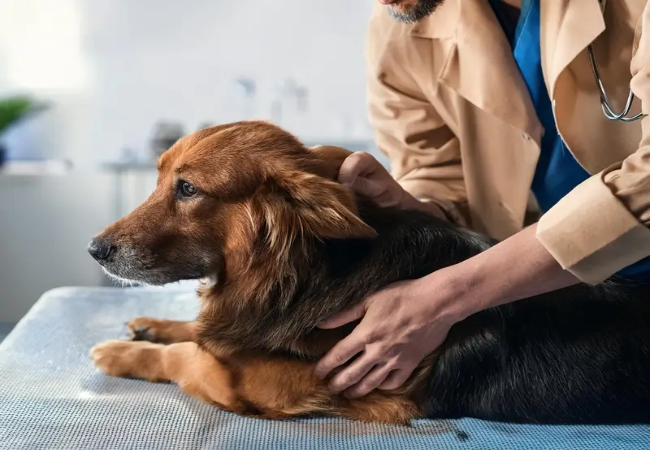Vet Guide to Dislocated Shoulder in Dogs 2025🐶🩺

In this article
Vet Guide to Dislocated Shoulder in Dogs 2025🐶🩺
By Dr. Duncan Houston BVSc
Shoulder luxation occurs when the head of the humerus pops out of the scapular socket, usually after trauma—like falls, collisions, or due to congenital instability or chronic soft tissue damage.
⚠️ Clinical Signs
- Lameness or inability to bear weight on the affected front leg; dropping the limb.
- Swelling or heat around the shoulder, visible abnormal limb positioning—often held out or rotated.
- Pain on touch or when moving the shoulder, reluctance to jump or play.
🔬 Diagnosis
- Physical exam: Veterinarian evaluates limb positioning, pain response, and joint mobility under sedation or anesthesia.
- X‑rays: Confirm dislocation direction (typically medial or lateral), look for fractures, and assess soft tissue involvement.
- Advanced imaging (CT/MRI) or arthroscopy may be used if other injuries or instability are suspected.
💉 Treatment Options
🔄 Closed Reduction (Non‑Surgical)
- Performed under general anesthesia—humeral head manually placed in socket, confirmed by X‑ray.
- Immobilized in a sling or spica bandage for ~7–14 days, followed by several weeks of restricted activity.
- Best for recent, uncomplicated luxations; risk of recurrence exists without stable soft tissues.
🔧 Surgical (Open Reduction & Stabilization)
- Indicated when closed reduction fails or soft tissue damage is severe (ligament tears, instability).
- Surgical options include capsule repair, tendon augmentation, bone anchors or prosthetic stabilization.
- Shoulder fusion or replacement may be considered in chronic or severe cases.
🛡️ Recovery & Rehabilitation
- Strict rest for 4–6 weeks, limited leash walks post-sling removal.
- Pain control with NSAIDs or short-term opioids as prescribed.
- Early passive range-of-motion and later guided physical therapy (hydrotherapy, massage, controlled exercises).
- Monitor for complications: re‑luxation, arthritis, muscle atrophy, or sling sores.
📈 Prognosis
- Closed reduction: good outcome if done early and soft tissues support joint – risk of recurrence.
- Surgical stabilization: ~80–90 % functional recovery in skilled hands.
- Long-term function relies on adherence to rehab and weight management; soft tissue injuries may lead to osteoarthritis.
✅ Dr Houston’s Clinical Tips
- 🚨 Seek veterinary care immediately — early reduction improves outcomes.
- 📸 Always confirm reduction and placement via post-procedure X‑ray.
- 🛡️ Use slings correctly and check for pressure sores daily.
- 🏥 Don’t delay surgery if the joint remains unstable—early intervention preserves limb utility.
- 📅 Structured rehab and owner commitment are key to full recovery.
If your dog suddenly stops using a front leg after trauma—or limps and avoids putting pressure—seek vet attention promptly. With early diagnosis, appropriate treatment, and good rehab, many dogs regain function and return to a happy, active life. 🐾❤️






